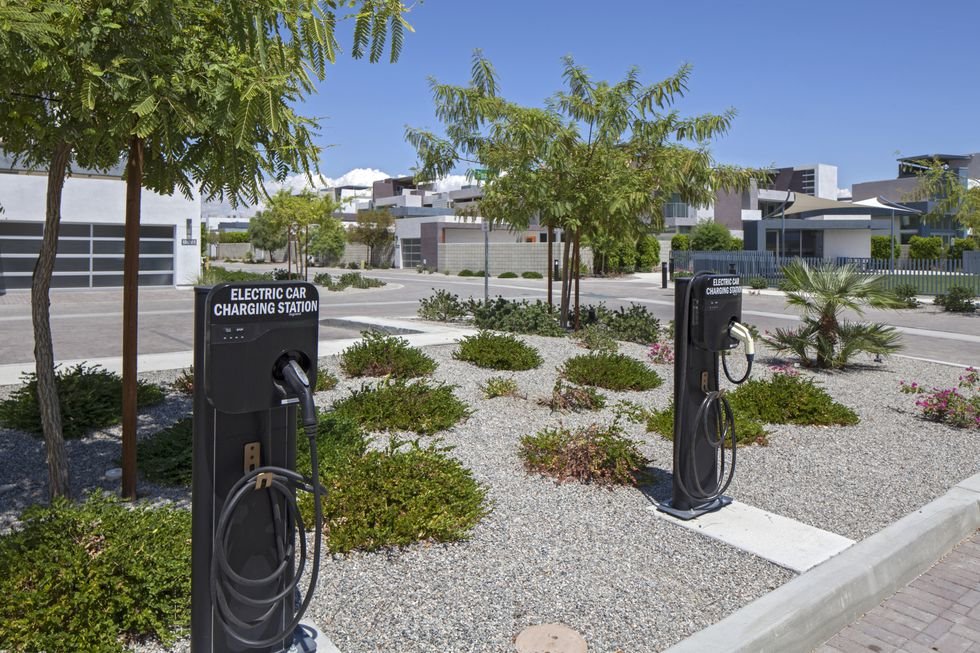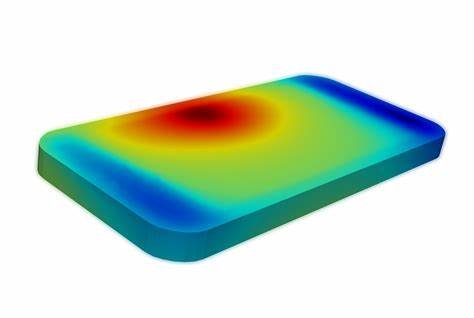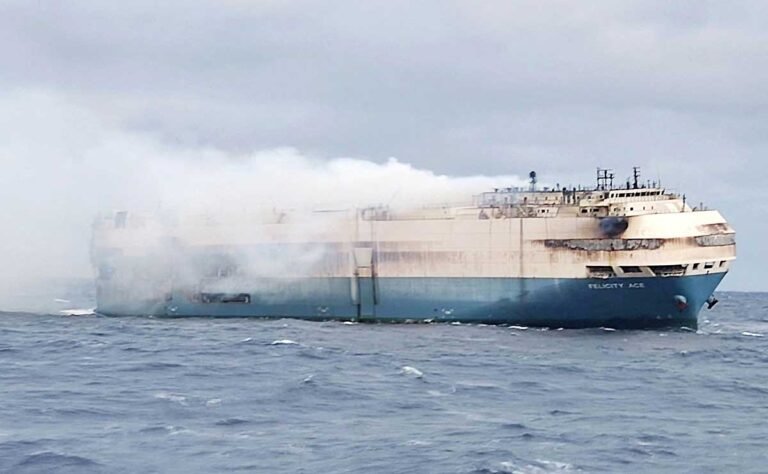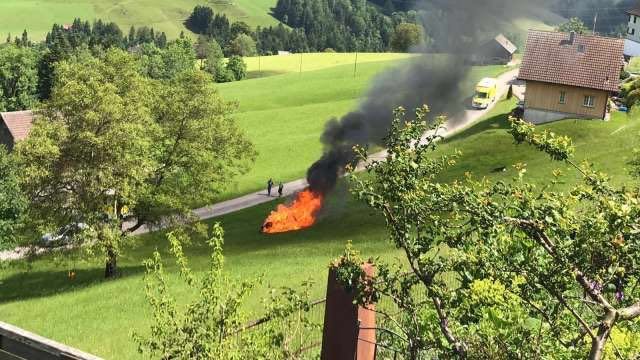
The intention of this cautionary tale is not to unnerve fuel retailers or to influence the opinion of those looking to invest in an electric vehicle, its purpose is to highlight the need to future-proof our EV infrastructure against degradation and mitigate the risk of fire.
In the October edition of erpecnews, we touched on how the emergence of all-electric vehicles has started to reshape our forecourts from ‘fuel with a shop’ to multi-faceted operations offering both traditional and alternative fuels. But are we jumping the gun? Or is this simply a case of being driven by the global dream of net zero, to such a degree that we are blinded to the potential dangers of EV fires and an inferior supporting infrastructure?
WHAT LIES AHEAD
The European Union predicts there will be 30 million EVs on the road by 2030, which may seem optimistic, but it is certainly achievable if the market continues to track the current trajectory. Today, the vast majority of EV infrastructure is comparatively new and consequently, in good working order. However, if we fast forward to the end of the decade, how well will it stand the test of time after prolonged and intense customer use?
Moreover, the need to alleviate the substantial expense of charger installations may give rise to low-cost , inferior-quality charging cables infiltrating the marketplace. Over time, all road-going vehicles will experience wear and tear, probably incur the odd minor knock and almost certainly drive over uneven road surfaces and EVs are no exception. Hitting a pothole impacts a vehicle’s undercarriage and suspension system; and in the case of an EV, it may result in unseen damage to the battery.
Furthermore, consumer demand for convenient, charging stations places additional strain on the EV battery – weakening its reserve capacity and shortening its life.Without regular safety checks and maintenance, coupling an ageing EV population with a deteriorating charging network could be a recipe for disaster.
THERMAL RUNAWAY - ONCE STARTED IT CANT BE STOPPED
A thermal runaway in a battery is a self destructive chain reaction that cannot be stopped once it has begun. It creates a feedback loop of rising heat and if left undetected it can lead to devastating results, such as fire and explosion. A Lithium-ion (Li-ion) battery is particularly susceptible to thermal runaway due to its composition. The cathode and anode electrodes are divided by a very thin polythene separator. Should this separator rupture, typically during charging, a short circuit follows which initiates the thermal runaway process. The temperature quickly rises to the melting point of the metallic lithium and causes a violent reaction.
Almost all EVs are powered by Li-ion batteries, making them vulnerable to the alarming possibility of thermal runaway. Thankfully, EV fires are very infrequent, perhaps owing to the immaturity of both EVs and the associated infrastructure.

THE CONSEQUENCES
In this section, we determine the challenges posed by an EV fire that differentiates it from that of an internal combustion engine (ICE) and detail the risk to society and the environment. Firstly, there is an enormous disparity between the burning temperatures – an EV will burn at circa 1200 degrees Celsius, whilst an ICE (internal combustion engine) generally reaches no more than 600 degrees.
During an EV fire, a loud fizzing sound can be heard as the thermal runaway moves through battery cells, often followed by large jets of flame which can extend up to three metres in length. These fire jets can cause untold damage to nearby vehicles, charging infrastructure and property, not to mention the risk to human life. EV fires produce a significant amount of smoke and soot containing both carbon monoxide and hydrogen cyanide, which are highly toxic and potentially fatal.
Flame-retardant clothing and protective breathing apparatus are a must when tackling an EV fire, so it is safe to say that the job must always be left to professional firefighters not 'have a go' hero's.
EXTINGUISHING THE FLAMES
Firefighters have two main options, let the fire burn out or extinguish it. Most would say that the obvious choice is to extinguish the fire, however, many car manufacturers advise a controlled burn, allowing the firefighters to focus on protecting the surrounding area.
Fires involving Li-ion batteries are extremely difficult to extinguish and burn at formidable temperatures for hours on end. Even when the fire has been successfully put out, the problem for the fire brigade is not over. Electric vehicle fires have the tendency to reignite hours, days or even weeks after the initial blaze, and they can do so many times. Not only does this pose a safety issue, but it also poses a legal issue: recovery firms are becoming increasingly concerned about transporting fire-damaged EVs.
CAR PARK CHARGING FACILITIES
There is a growing sense of concern about the dangers and apparent spontaneity of EV fires, especially if they happen in an underground or multi-story car park charging facility. The confined space generates a high concentration of toxic smoke and soot, reducing visibility to less than half a metre and creating a potential death trap for the public trying to flee from the site. The extreme heat intensity of Li-ion battery fires could cause structural fatigue in basement car parks, undermining the integrity of the concrete pillars where EV charging poles are now being installed.
The current sprinkler systems in these facilities will have little to no impact on an EV fire and the Li-ion battery will simply continue to burn until it burns itself out.

THE SINKING OF THE FELICITY ACE
A $500 million tragedy that should never have happened. The 656-foot-long carrier ship caught fire, taking 3,828 cars to the bottom of the ocean with enormous consequences for the automotive manufacturers concerned. After the fire broke out in the cargo hold, it spread rapidly and forced all 22 crew members to abandon the ship. The now unmanned container vessel drifted on the Atlantic and continued to burn for over a week before slipping under the waves.
The Felicity Ace had been carrying a large number of fully electric vehicles which are thought to be the cause of the blaze, and are certainly to blame for the fire being very difficult to control. The cargo ship belonged to Mitsui OSK Lines (MOL), which has already gone on record stating that it won't transport used EVs anymore. Hybrids are fine, but used battery-powered full-electric vehicles are no longer welcome.

TOP GEAR'S RICHARD HAMMOND HAS A LUCKY ESCAPE
In June 2017, former BBC Top Gear presenter, Richard Hammond, was involved in a serious car crash at the Hemberg hill climb event in Switzerland. He was driving a Croatian $1 million, Rimac Concept One all-electric 221 mph supercar when he lost control and came off the road. The vehicle rolled down a hillside before coming to a standstill on its roof. Fortunately, Hammond was able to climb out of the car and scramble to safety, seconds before it exploded into flames and burnt to a shell.
CONCLUSIONS
To reiterate. EV fires are currently incredibly rare and pose a far smaller threat to drivers than Hybrids or ICE vehicles. As a quick comparison
Petrol/diesel vehicles: 1,529 fires per 100K sales *
Electric vehicles: 25 fires per 100K sales *
Indeed, battery electric vehicles (BEV) have only a 0.025% risk of catching fire in normal operation, making them the safest vehicles on the roads today! But who knows if the future might tell a different story...
*Figures supplied by the National Transportation Safety Board
THE FINAL WORD FROM A SAFE PAIR OF HANDS
Having met up recently with Jamie Thompson, who for most of his career was the Principal Petroleum Inspector of the London Fire Brigade, I asked him for his thoughts on the fire risks surrounding EV's. He commented;
"This matter demonstrates one of the risks the industry faces as we move away from ICE vehicles. Having spent most of my career attempting to mitigate the hazards of petrol delivery, distribution and dispensing, it is inevitable that whatever 'fuel' we use to replace petrol and diesel, i.e. electric, hydrogen, biofuels etc we will encounter challenges which will have to be dealt with".
Jamie is currently Chairman of the Association of Petroleum & Explosives Association Technical committee.